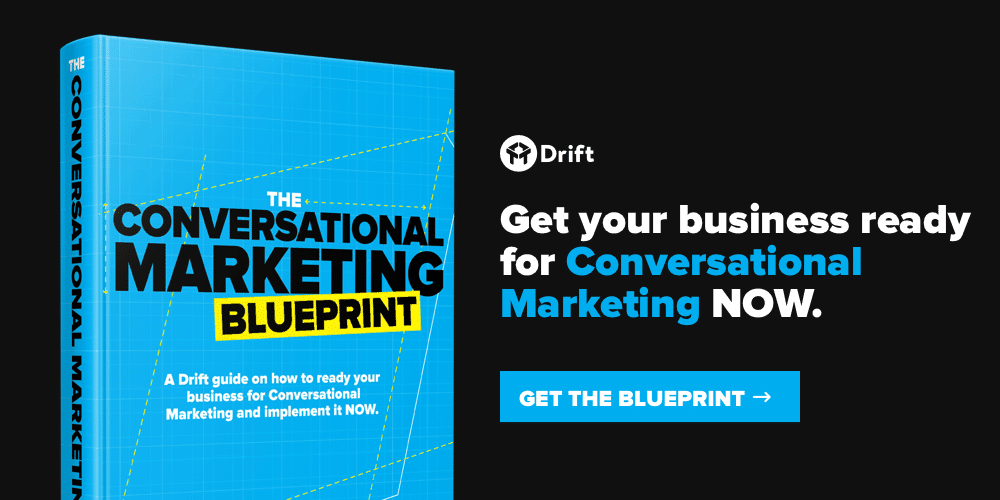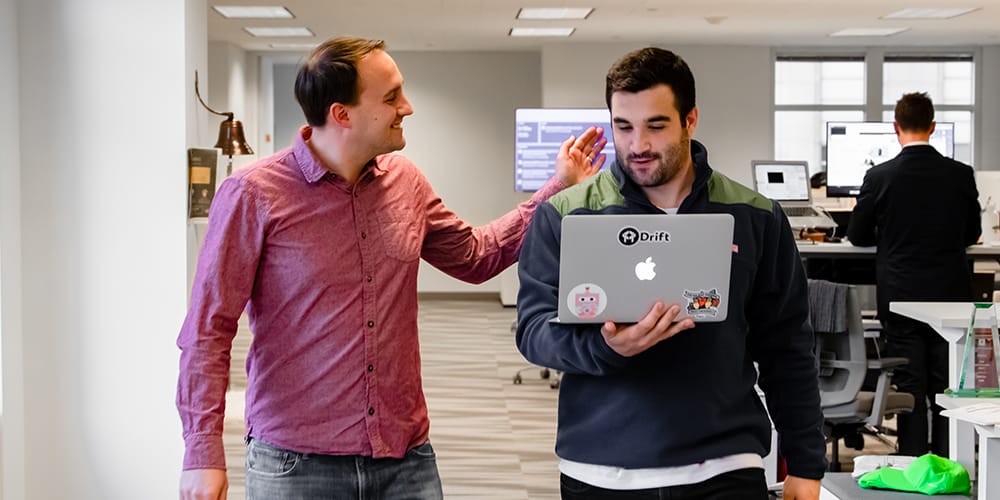
I love webinars.
I really do. Ask anyone on my team and they’ll tell you how fired up I get before speaking on a webinar, or how excited I get after learning some new tricks from a webinar I attended.
But as much as I love webinars, I have to admit. Not all webinars are created equal.
Look, we’ve all been there. You’re sitting on a webinar. The speakers aren’t engaging and the content isn’t what you thought it would be. And it just drags on and on. Or maybe you thought you’d get some real learnings out of it, but the whole thing just turns out to be a sales pitch.
Either way, it’s not a good experience.
And in my opinion, it’s a missed opportunity to have a real conversation with your customers and prospects.
Because when they’re done well, webinars can be an extremely effective channel for B2B marketers. Studies show that audio/visual content adoption (like videos, live streaming, and webinars) is growing rapidly.
There’s never been a better time for webinars. We know customers want to engage with us over these platforms, but we need to make sure we’re delivering on their expectations. We need to make webinars more engaging. We need to make sure they’re worth our customers’ time.
And instead of talking at our customers on webinars, we need to talk with them.
So, in true marketer form, I have a call to action for you.
In 2019, let’s make a vow. Let’s make webinars more conversational.
And don’t worry, I’m not ending the post there ?
Instead, I’m going to share real-life examples of what Drift does before, during, and after each webinar we host. We like to think of it as our secret formula for making sure every webinar we do is conversational.
Are you with me? Let’s go!
Before The Webinar
1. We don’t send a formal webinar invite, or use HTML. Plain text all the way.

2. We use line breaks, the occasional bolded phrase…and just let the words on the page do the talking.
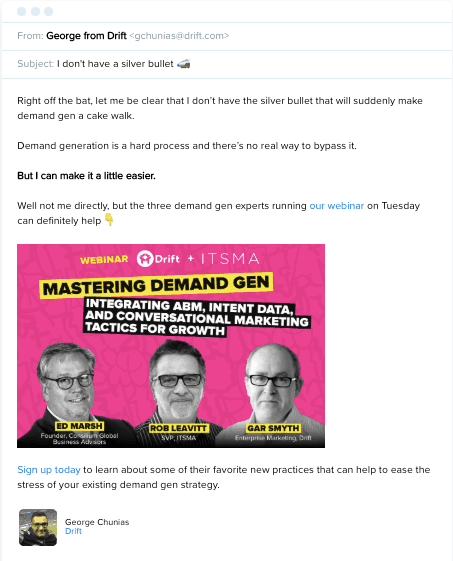
3. We make our invite conversational. And we keep it short.
4. We give a quick background of who the speaker is and what they’re all about, not just their resume.
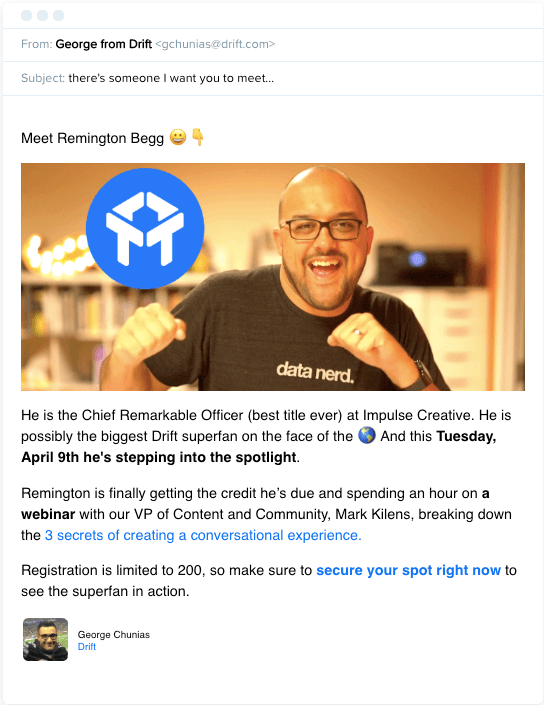
5. Sometimes we even include fun anecdotes about the speaker.
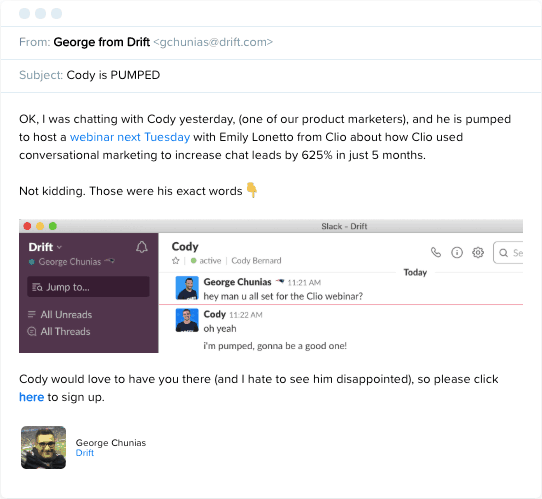
6. We let invitees know what they’re going to get out of it, and use Cialdini’s principles of persuasion (social proof, authority, scarcity, etc.) to make it even more compelling.
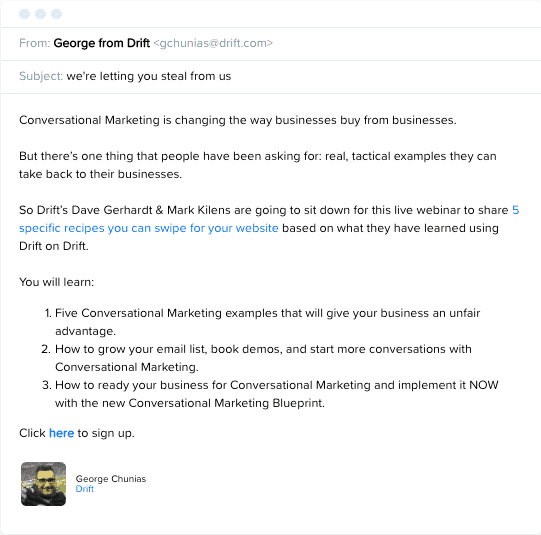
7. Emojis are ?
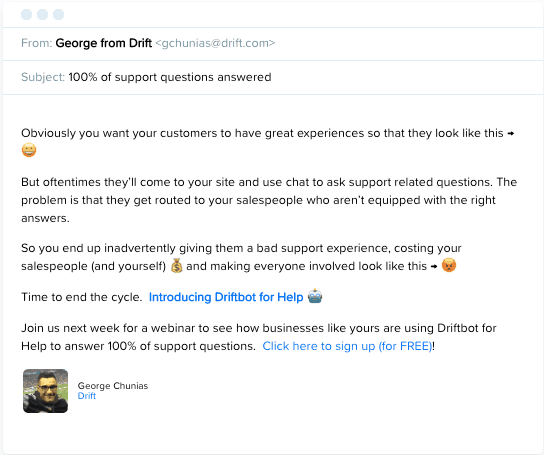
8. And yes, we’ve even been known to throw in a GIF or two.
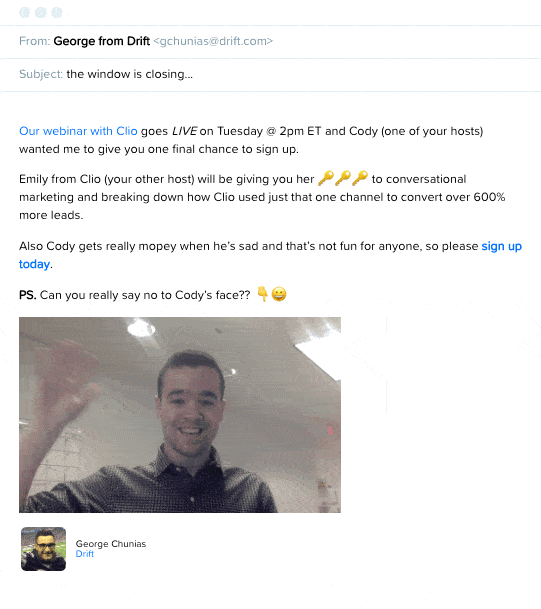
9. We incorporate social into every webinar promo.
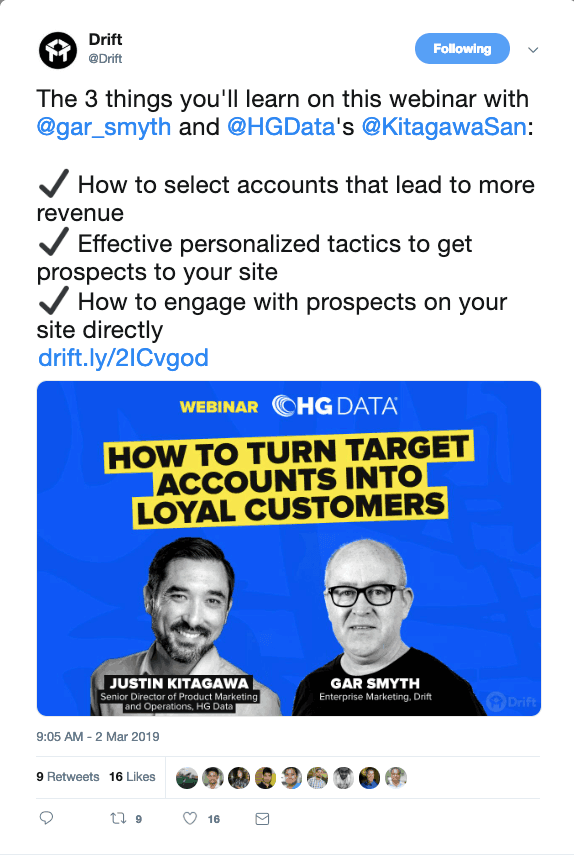
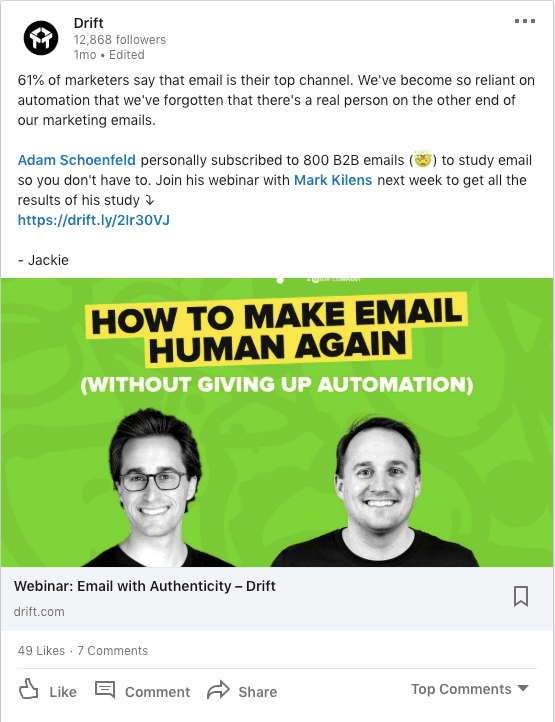
10. Here’s a play to drive more registrations. When you promote the webinar you can say that you’re giving out a special offer for live webinar attendees. But you have to attend to get it. It won’t be available when you send out the webinar recording.
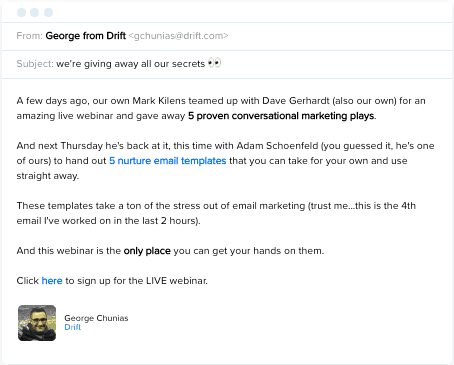
11. Webinars have a bad reputation for being too long. Our take? Variety is key. It all depends on what you’re trying to convey and the quality of the content and presenters. Don’t make a long webinar for the sake of having a long webinar. Optimize for the attendee, not you.
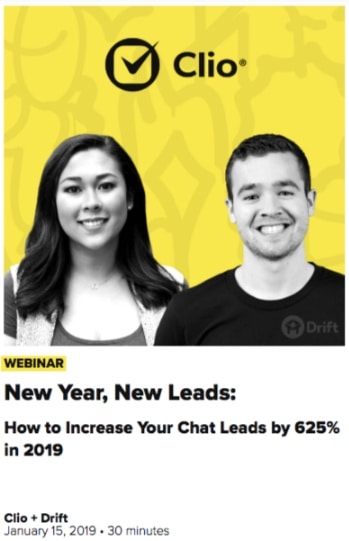
12. Before we do the webinar, we meet in advance to lay out a plan of attack for the content.
13. Then as we get closer, we do a dry run to work out any kinks – pace, who kicks it off, says what, etc.
14. And finally, we send a couple short and sweet reminders leading up to the webinar.

During The Webinar
1. Start the webinar off a few minutes before it really begins. Break the ice, talk to the audience through the chat feature on your webinar platform. Ask attendees where they are calling from. Ask them what they want to learn. Or about their favorite food. One question should do the trick. Call people out by name and let them know you know they’re there.
2. Then you start. Right off the bat you can establish that the webinar is going to be a conversation. You can even have a slide that says it.
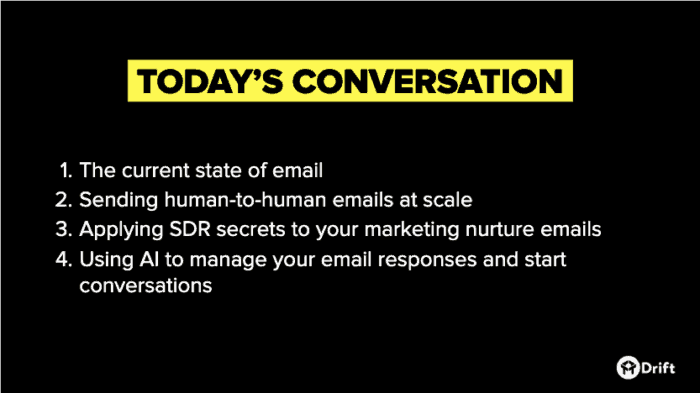
3. This is a big one. Make sure you use one thought per slide. Visuals are key.
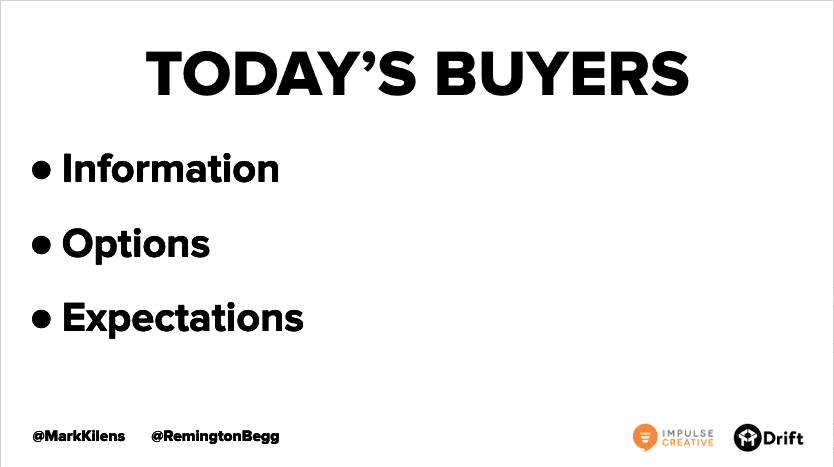
4. And don’t script everything out or over-rehearse. Be natural.
5. Always use video.
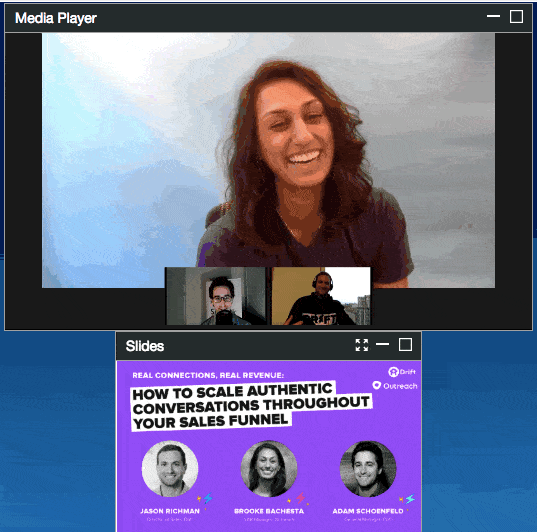
6. Live tweet the webinar.
7. Remember to be vulnerable. You’re not a talking head – you’re a real person. And for me, there’s nothing like a good self-deprecating joke to make you seem more relatable ?
8. Webinars can be a lot for the attendee to take in. Remember to incorporate pauses in your speaking to give people a little mental break to process what you’re saying.
9. Also, it’s OK to stop and make sure people are following along. Check in if they have any questions about what you just covered before moving onto the next section of your talk.
10. And calling out attendees by name isn’t just for the beginning. Throughout the webinar make sure you’re calling out attendees by name to keep them engaged.
11. Another idea – let them know about a CTA that makes them want to stay to the end of the webinar. Something special that they weren’t expecting to get out of it.
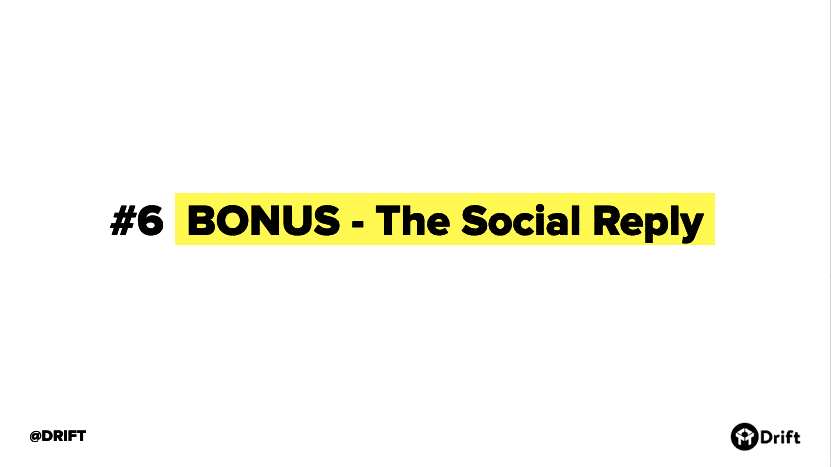
After The Webinar
1. Follow up as soon as possible.
2. Make one follow up email for attendees.

3. And one follow up email for no shows.
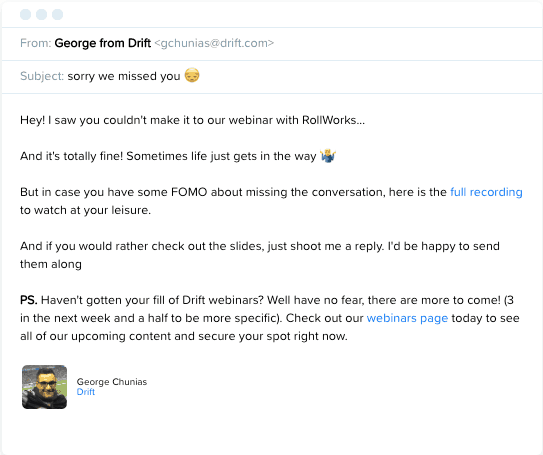
4. Do a light edit on the video. Take out the icebreaker portion and get right to the content.
5. Make the webinar thumbnail on your website engaging.
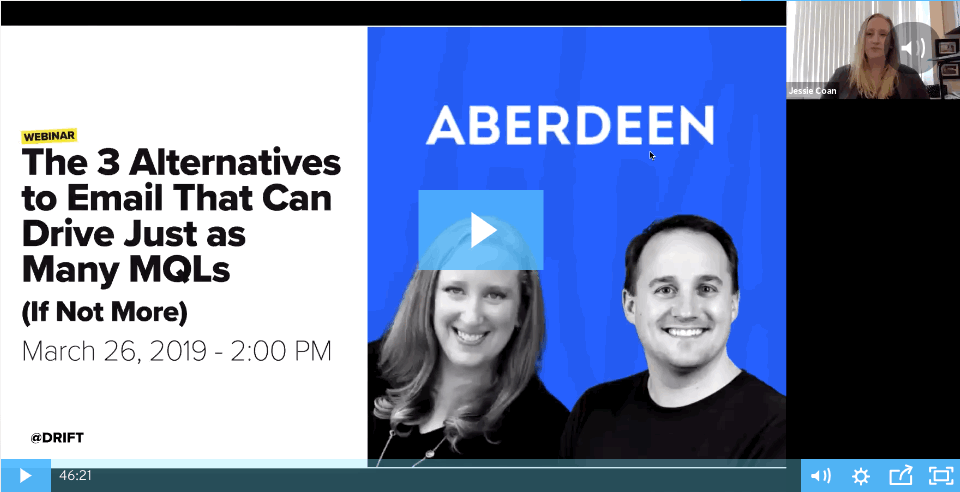
6. Then use a bot to deliver the recording.
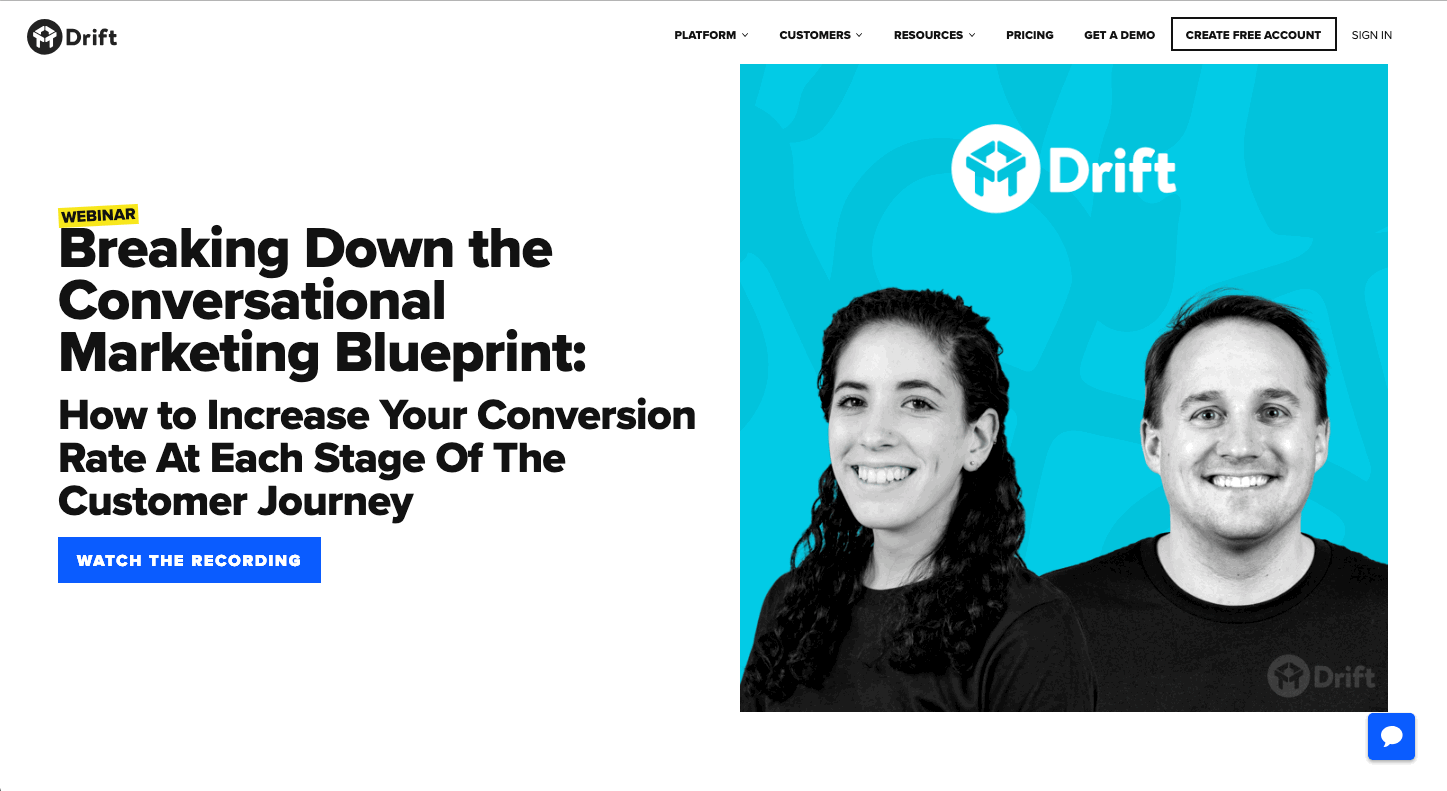
7. And if people say they want the slides, throw in a CTA to have them email you back to get them.
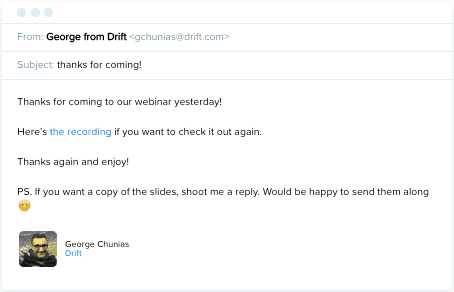
8. On top of that, you can use an email service like Siftrock to manage email replies, deliver the content, and route in the right rep for the account.

9. And when you get a reply, make sure you respond to all emails like you would respond to a friend. Be authentic, human, and helpful.

We’re pretty passionate about conversational webinars at Drift.
Because when you approach webinars as conversations, they can serve as an extremely effective channel for B2B marketers.
And if there’s one thing we marketers love, it’s finding a way to break through the noise and connect with customers and prospects on a deeper level. Conversational webinars give you a chance to do just that.
So if you’re looking to start your own webinar program or strengthen an existing one, we wanted to give you one last tip and share the tools we use to fuel our webinar engine:
- Marketo for marketing automation
- Siftrock for managing email replies
- Zoom for webinar hosting and recording
- Wistia for hosting the recording
- Sprout Social for social engagement and moderation
- and last but not least, Drift for email sequences, bot registration, landing page hosting and more⚡
Know a great conversational webinar strategy that I left out? I want to hear it. Send a tweet to @MarkKilens and we can chat.






